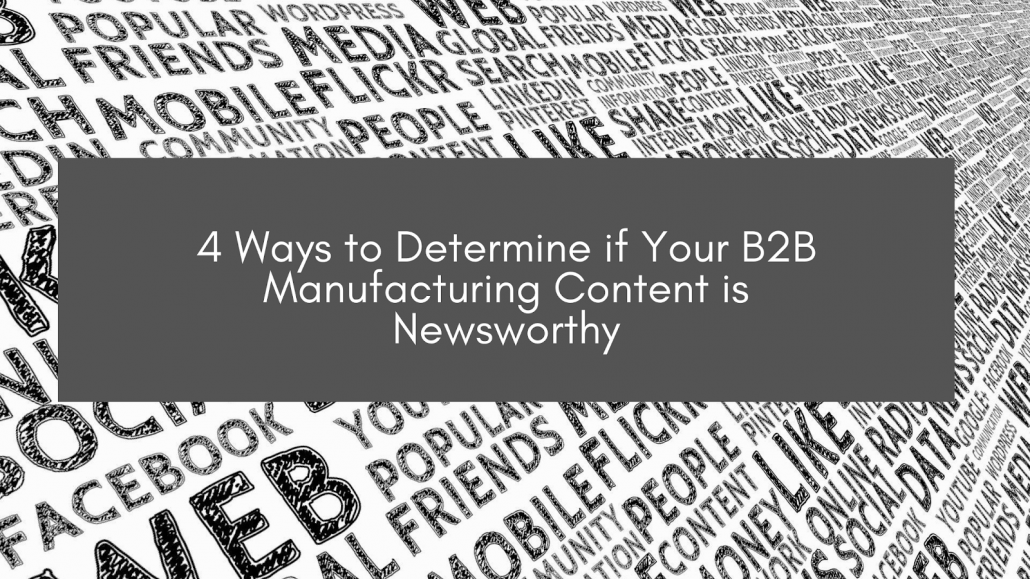4 Ways to Determine if Your B2B Manufacturing Content is Newsworthy
Oftentimes, we are asked if a piece of content should be utilized on a client’s website or pitched to an industry publication. Your piece must meet at least one of the criteria below in order to be worth pitching either a local or industry publication. Continue reading to learn the 4 main factors of newsworthiness.
Timing
Timing is a key element of newsworthiness. Does your story relate to a current event in your industry? Does your story tie into a hot new trend in your industry? If so, your content is timely and could potentially be newsworthy. Editors at local and industry trade publications are looking to cover current news, not old stories. So, if you have been sitting on a case study for a year or a story idea, it may be better suited for your blog or an email campaign to prospects and customers.
Significance
Another key component of newsworthiness is the overall significance of the story. Ask yourself, who will care about this story? Would the story appeal to manufacturers as a whole or only to manufacturers utilizing 3D printing? It is important to have an understanding of who may be interested, as it directly impacts where to pitch the story. For example, a general manufacturing story could be good for IndustryWeek Magazine, while a story about 3D printing might be better suited for 3D Metal Printing Magazine. For tips on industry publication, read our blog: How to Use Publication Media Kits to Target Better Prospects
Next, determine if your content is niche (only appealing to 50 people perhaps) or is it widely interesting and applicable to the majority of a publication’s circulation? This is a key element to understanding if your story concept should be pitched to a publication, and one point much appreciated to the editor of the magazine.
Finally, ask yourself what are 3 reasons someone would want to know this information? If you cannot answer this quickly and without hesitation, the story probably isn’t right for the industrial trade media.
The Industrial Manufacturer’s Guide to Public Relations
Proximity
Proximity is an important factor when determining where your story should be pitched. Does my story relate to a specific region? For example, is your story relevant just to Northeast Ohio manufacturers? Then perhaps, pitching to the Crain’s Cleveland Business’s manufacturing reporter would be appropriate. Is your story relevant worldwide? Then you should consider an industry publication with a readership around the globe.
Human Interest
Most of the time, editors are looking for stories that are timely. However, there is one caveat. A story does not necessarily have to be timely if it fits into a human interest piece. Do you have a story idea that evokes strong emotion? Emotions such as happiness, amusement, sadness, or laughter make for a good human interest story. Examples include the following: an employee-owned manufacturing company raising significant capital for a childhood cancer charity, a 4th generation manufacturing owner reinventing a 100-year old manufacturing company to keep its doors open, or a manufacturer who started a high school apprenticeship program for underprivileged kids and establishing paid internships.
Conclusion
We hope our tips help you have a clearer understanding of what makes content newsworthy. By pitching your story to an industry publication (and getting it published), your manufacturing company has the potential to reach 100s of thousands of readers. Do you need help with content development and media relations strategy? At Felber PR & Marketing, We Get Manufacturing. We understand how editors and reporters think. Relationships with media need to be fostered, just like relationships with your best customers. Need help?


Leave a Reply
Want to join the discussion?Feel free to contribute!